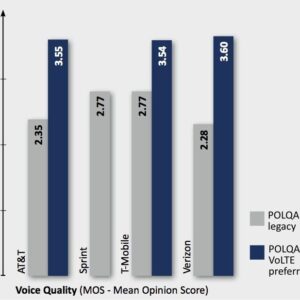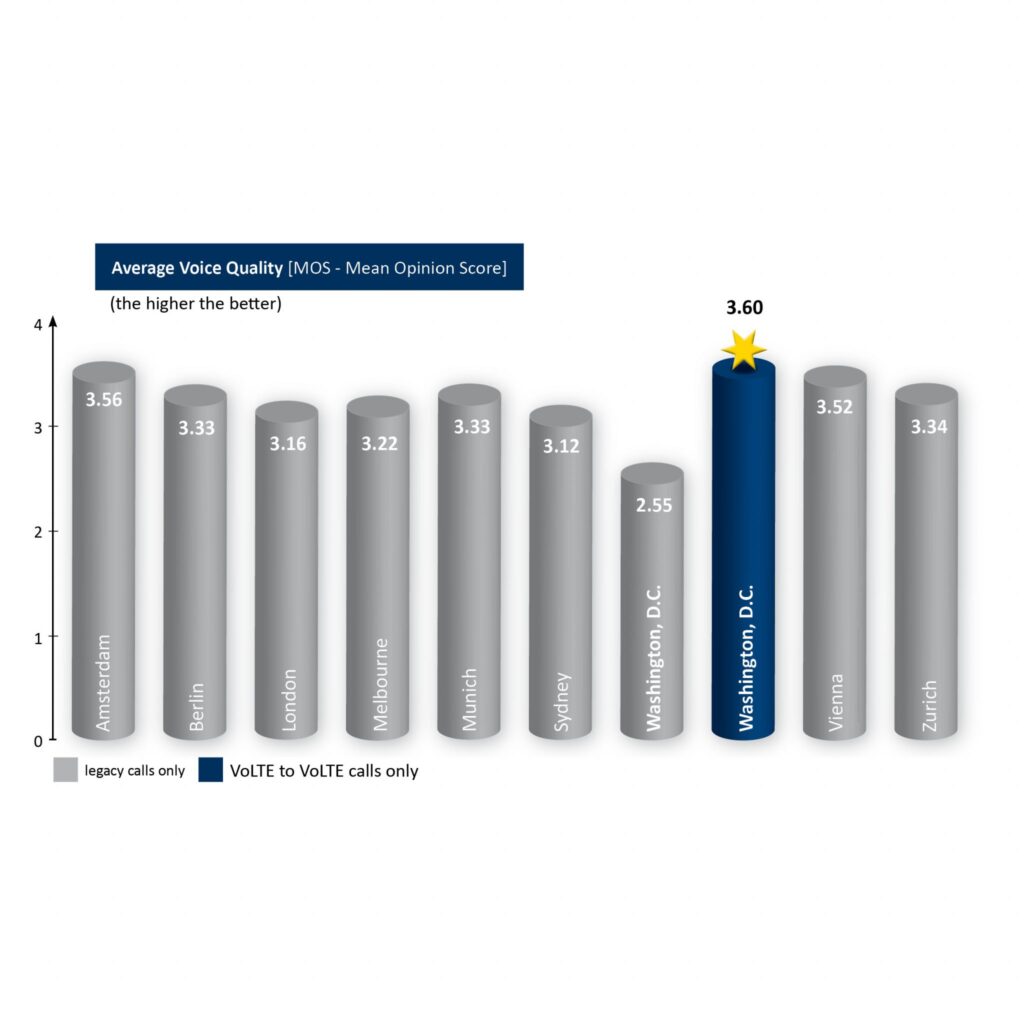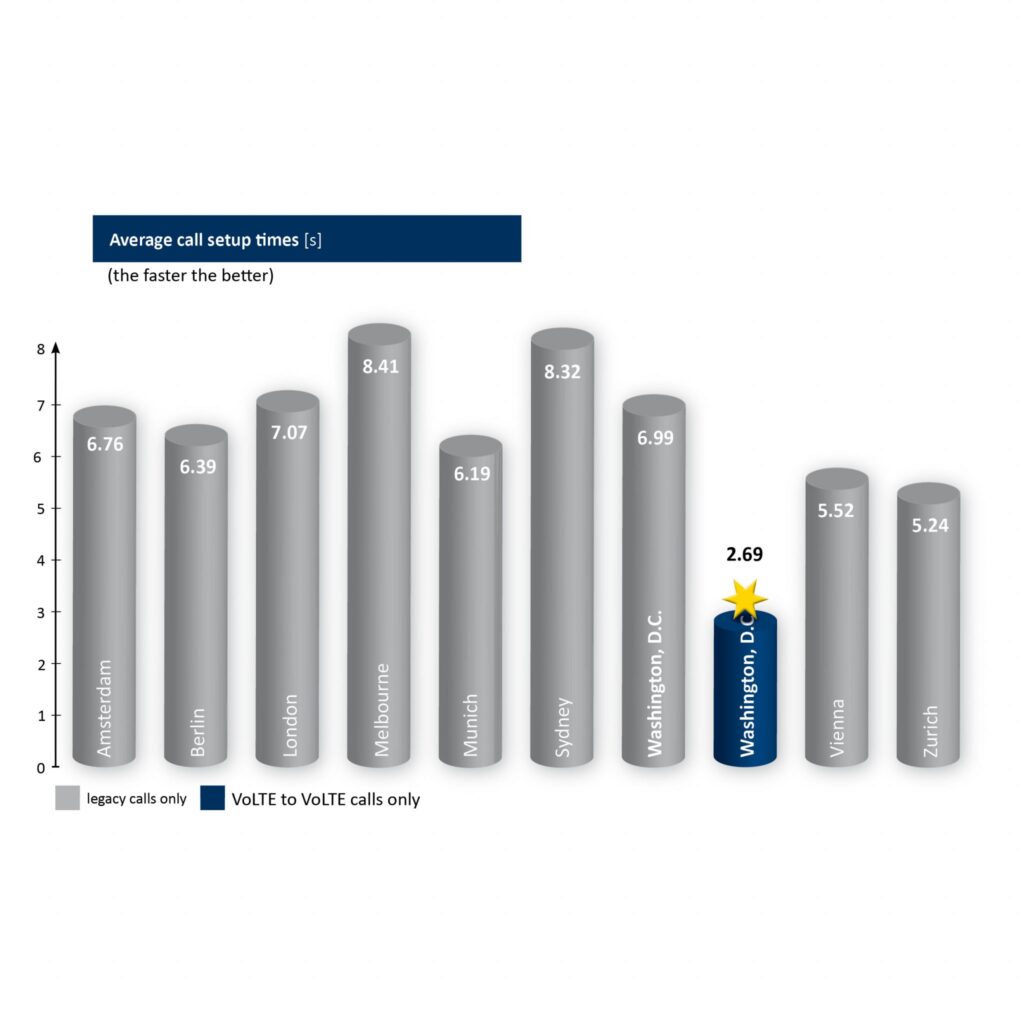In one of the first public views of how voice over LTE is performing in live networks, P3 Communications released VoLTE benchmarking results, which reflected good performance across all of the carriers that have implemented the technology – in one market, at least.
In general, the results showed that call set-up times were significantly faster than circuit-switched voice; voice quality was higher; and the technology was generally stable, with very few fall-backs to circuit-switched voice.
P3 did VoLTE drive tests over two recent weeks around Washington, D.C., looking at the performance of VoLTE and legacy voice, as well as fallback from VoLTE to circuit-switched voice. More than 7,000 calls were made across the four national carriers’ networks, with more than 50,000 speech samples. VoLTE was tested on AT&T Mobility, Verizon Wireless and T-Mobile US’ networks, as Sprint hasn’t yet deployed the technology; and legacy voice quality was tested across all four networks.
“I think the biggest takeaway is that the VoLTE technology delivers on its promise for high-speed call set-up times and good speech quality,” said Dirk Bernhardt, CEO of P3 Communications. “The carriers all had different strategies and it seems like they work, at least in D.C.”
Bernhardt said that in legacy networks, typical call set-up times range from 5 to 15 seconds. In the actual carrier networks tested, call set-up time was around 7 seconds, with Sprint’s coming in the fastest at about 6 seconds. VoLTE call set-up times on the carrier networks reduced that time to between 2 and 4 seconds. See P3’s data in the graphs below:



With VoLTE enabled on both ends of device-to-device calls, P3 found that a VoLTE connection was established around 97% to 98% of the time and very rarely did the technology hand over to 3G or 2G circuit-switched voice. Verizon Wireless has opted not to implement circuit-switched fallback for VoLTE and warns users who opt in that their VoLTE calls will drop if they leave LTE coverage. Bernhardt said that P3 only saw five instances of fallback to 3G on AT&T Mobility’s network and one call on T-Mobile US’ network that dropped down from VoLTE to 2G. The calls were not interrupted, he noted, but the voice quality diminished to legacy voice levels.
“At least in D.C., VoLTE is a significant improvement and it works. It’s ready for primetime,” Bernhardt said. “I think it’s also go-time to switch this on as a default.”
VoLTE is an opt-in option at this point, with users having to request that the service be added to their plan and activate its use on their phones. Cross-carrier VoLTE isn’t working at this point, either, with the major carriers having announced plans to collaborate with one another to enable VoLTE calls to be made between different wireless networks. That lack of cross-carrier VoLTE is one of the biggest drawbacks to the technology at this point, Bernhardt said.
P3 will do detailed breakdowns of its results and analysis with the carriers, Bernhardt said, and the company hopes to expand its VoLTE benchmarking, including testing in more markets, sometime in the first half of next year. The full report for the D.C. VoLTE benchmarking can be downloaded from P3’s site here.
RCR Wireless News interviewed Bernhardt on P3’s testing prior to the benchmarking results being released – watch that interview below:

